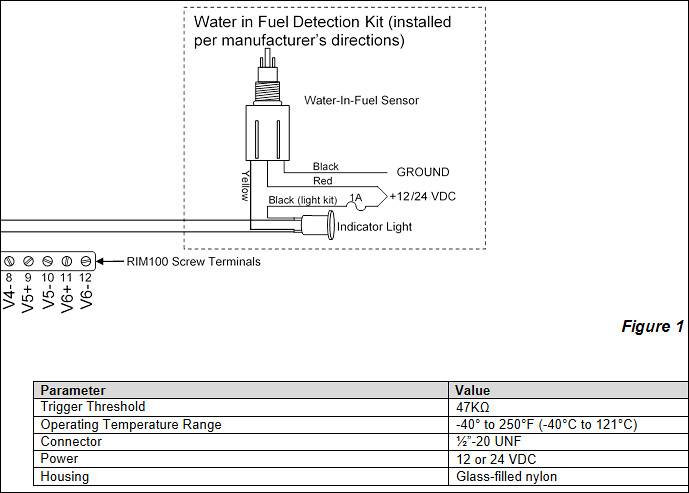First off I am not looking for any debate on “switches/sensors”
Please refer to this thread:
http://www.yamahaoutboardparts.com/f...e-th26676.html
I did a test on fuel and water conductivity (resistance). Using a Fluke DMM with the probes immersed in the liquid, this is a partial summary of results:
1. Tap Water 1.132 M Ohms
2. Distilled Water 2.76 Mohms
3. Sea Water 5.55 K ohms
4. Rec 90 Gasoline w/water (Probes immersed in the gas) OL (infinite)
5. Rec 90 Gasoline w/water (Probes immersed in the water) 10.93 M Ohms
6. Rec 90 Gasoline w/water (agitated) 4.775 M ohms
Here’s some pics:
[IMG] Continuity by Charles Postis, on Flickr[/IMG]
Continuity by Charles Postis, on Flickr[/IMG]
My thinking is that the 2 wire “probe” that both Yamaha and one that Racor uses is nothing but exactly what Racor calls them, “probe”. Racor says it is used to measure resistance. Therefore, my DMM leads and probes are the same as the “probe” (more or less).
What I would like to see if one or both of you have the “probe”, and you can perform tests like I did substituting the “probe” for the leads I used. I wonder if the “probe is simply two conductive tips attached to leads. There is no switch within the "probe", and the medium being measured is never a zero ohm bridge across the "probe" tips.
Or, maybe you know already!!
Please refer to this thread:
http://www.yamahaoutboardparts.com/f...e-th26676.html
I did a test on fuel and water conductivity (resistance). Using a Fluke DMM with the probes immersed in the liquid, this is a partial summary of results:
1. Tap Water 1.132 M Ohms
2. Distilled Water 2.76 Mohms
3. Sea Water 5.55 K ohms
4. Rec 90 Gasoline w/water (Probes immersed in the gas) OL (infinite)
5. Rec 90 Gasoline w/water (Probes immersed in the water) 10.93 M Ohms
6. Rec 90 Gasoline w/water (agitated) 4.775 M ohms
Here’s some pics:
[IMG]
 Continuity by Charles Postis, on Flickr[/IMG]
Continuity by Charles Postis, on Flickr[/IMG]My thinking is that the 2 wire “probe” that both Yamaha and one that Racor uses is nothing but exactly what Racor calls them, “probe”. Racor says it is used to measure resistance. Therefore, my DMM leads and probes are the same as the “probe” (more or less).
What I would like to see if one or both of you have the “probe”, and you can perform tests like I did substituting the “probe” for the leads I used. I wonder if the “probe is simply two conductive tips attached to leads. There is no switch within the "probe", and the medium being measured is never a zero ohm bridge across the "probe" tips.
Or, maybe you know already!!




Comment